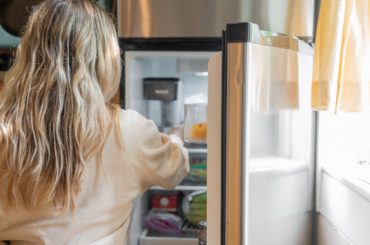A new report shows that toy marketers still frequently employ gender stereotypes when advertising products to families. And it’s detrimental to kids of all genders.
Most of us are aware of the traditional “boys like trucks, girls like dolls” mindset — but more and more often in today’s world, kids of any gender are allowed, and even encouraged, to play with any toy. The toy marketing industry, however, has yet to catch up.
For the report, produced in collaboration with the Geena Davis Institute on Gender in Media, toy industry experts Laurel Wider and Jodi Bondi Norgaard analyzed the content of 175 advertisements for “best selling” toys at Target, Walmart, and Amazon. Here are some of their key findings:
- Toy ads targeted at girls were 18 times more likely to showcase “nurturing” or “domestic” skills than toy ads marketed to boys.
- Toys ads marketed to boys were dominated by products like cars, sports equipment/games, and toy weapons.
- Of the toys that were played competitively or violently, 75 percent were played with by boys in the ads.
Gender coding in marketing materials also included more subtle aspects such as colors, the pace and volume of music, characteristics of voice overs used, and the types of emotions associated with playing with a toy. As the report states, “Parents are responsive to this marketing and can reinforce gender stereotypes through both the toys they purchase for their children and the types of play they encourage and discourage.”
How gender stereotypes in play affect kids — and the adults they become
Children internalize gender stereotypes by age five — and since young kids and their parents are exposed to toy ads so frequently, those marketing messages have a huge influence on how kids see themselves.
The report asserts that toy advertisements send clear messages to boys and girls about what they are expected to be interested in and how they are expected to act. These gender stereotypes lead to thinking that can get in the way of kids’ creativity and ambitions in life. For example, when boys don’t see themselves as natural caregivers, and girls don’t see themselves as natural car and sports experts, their potential is limited from an early age.
What parents can do to disrupt gender stereotypes in play
- Mix up gender roles and pronouns during play. Why not use “she” pronouns on your kids’ toy dinosaurs? Why not pretend a “girl” doll is going on a space mission, or a male action figure needs to take care of his baby?
- Next time you’re searching for birthday gifts, a movie for movie night, or books from the library, look for products and stories that disrupt gender stereotypes. Common Sense Media is a great resource for finding kids’ movies and TV shows with better representation, and A Mighty Girl can help you find inclusive and empowering kids’ toys and books.
- Encourage open-ended activities like building with blocks, making art, and playing outside — this type of play leaves lots of room for creativity and learning, without the gender stereotypes. Kids don’t need to reenact what they see in toy ads to have a happy childhood.
- Start everyday conversations with your kids about recognizing and addressing gender stereotypes and sexism.
- Discuss ads together, and encourage critical thinking. Ask kids questions, like “Do you notice anything about the colors on this page that’s filled with dolls, versus on the next page that’s filled with toy cars?”
- Demand more of companies that market their products to families. For example, if you and your child notice an unfair gender discrepancy in toy ads, write a letter to the company asking that they make their marketing more inclusive and encouraging for kids of all genders.
- Take a hard look at your own consumption habits. Are there products you’ve felt like you’ve “had to have” due to messaging about gender expectations that you’ve seen in ads?







